To slow down at the pace of life
It is common nowadays for our attention to be fragmented and dispersed due to the increasing number of stimuli and information we are showered with, constantly. This means that our thoughts are not given enough “empty” time to freely flow into contemplation. The perception of our surroundings arrives at us in scattered bits and we are rarely immersed in one thought, one action, one feeling. Deep, contemplative attention requires resting the mind and listening, quieting our hyperactive and overly stimulated egos. It is a state of freedom, without pressure to rush, toil or attend to the necessities of life. There are things that only reveal themselves to us when we let our mind wonder. Without such opportunities, our gaze can rest on nothing and we find ourselves restless. Nietzsche described in Twilight of the Idols that learning to see means “getting your eyes used to calm, to patience, to letting things come to you” - that is, making yourself capable of deep, contemplative attention, slowing down.
My body of work “To slow down at the pace of life” reflects these moments of slowing down. I wanted the concept to be simple - what are the things that we can start noticing when the noise subsides? When I take a walk outside, without an aim, no set distance to complete, no audiobook or podcast playing, what does my mind pay attention to? If being in the present is a prerequisite for well-being, then what does the present look like?
The artworks in this series are inspired by symbols of conventional beauty - a flower, a cloud, leaves, a rainbow. They are chosen from nature, same as the materials I use in my work - salvaged wood. The way in which I construct my compositions is to me a representation of the interconnectedness and interdependence that binds life together. Everything rests on something and supports something else, every movement relies on a previous one and grows into a new one in an endless cycle. As the great naturalist John Muir observed, “when we try to pick out anything by itself, we find it hitched to everything else in the universe”.
My body of work “To slow down at the pace of life” reflects these moments of slowing down. I wanted the concept to be simple - what are the things that we can start noticing when the noise subsides? When I take a walk outside, without an aim, no set distance to complete, no audiobook or podcast playing, what does my mind pay attention to? If being in the present is a prerequisite for well-being, then what does the present look like?
The artworks in this series are inspired by symbols of conventional beauty - a flower, a cloud, leaves, a rainbow. They are chosen from nature, same as the materials I use in my work - salvaged wood. The way in which I construct my compositions is to me a representation of the interconnectedness and interdependence that binds life together. Everything rests on something and supports something else, every movement relies on a previous one and grows into a new one in an endless cycle. As the great naturalist John Muir observed, “when we try to pick out anything by itself, we find it hitched to everything else in the universe”.
To follow a cloud
41” x 31”
Salvaged wood (redwood, tigerwood, cedar, mahogany, ash, beech, maple, fir, pine, spruce, some unknown) on plywood
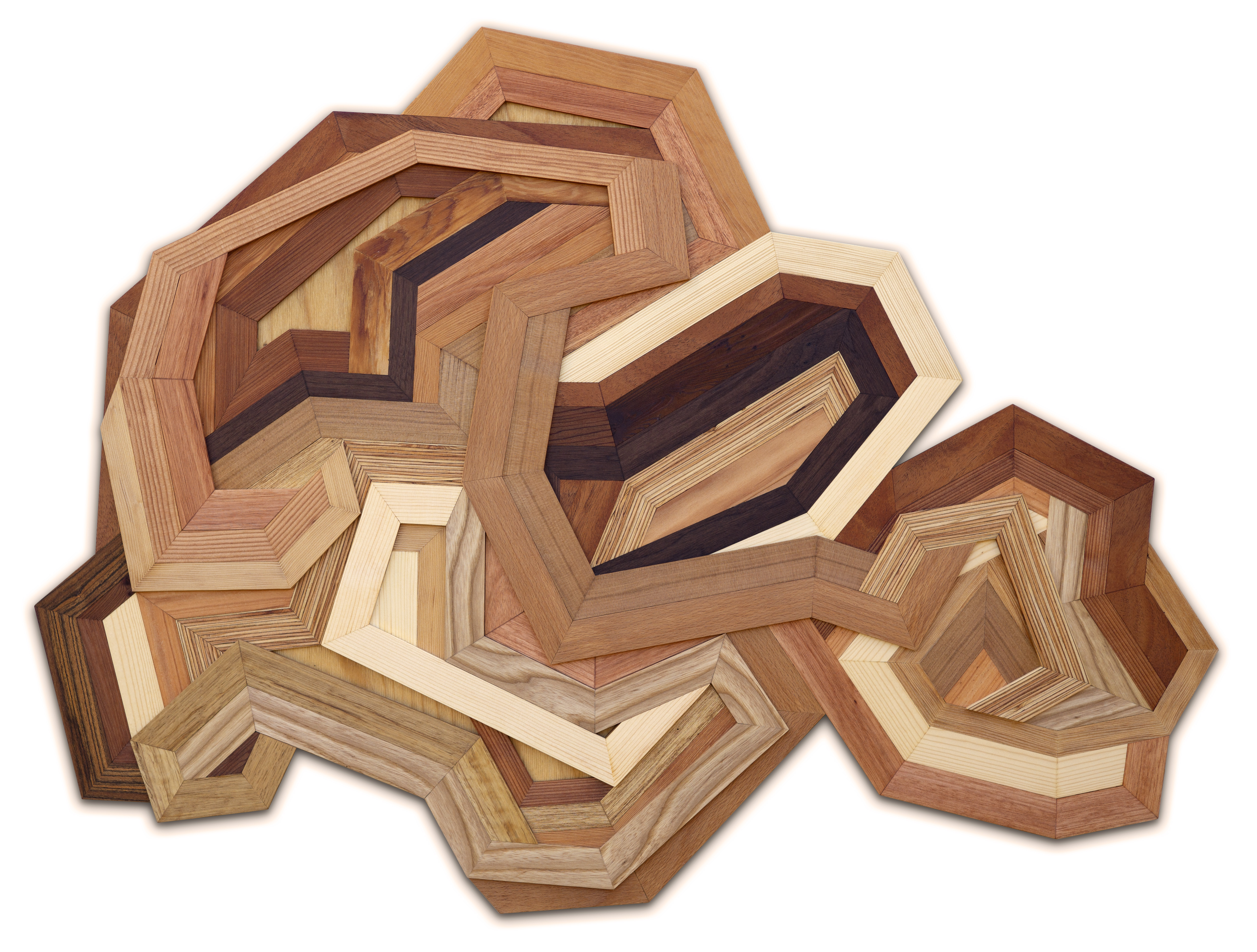
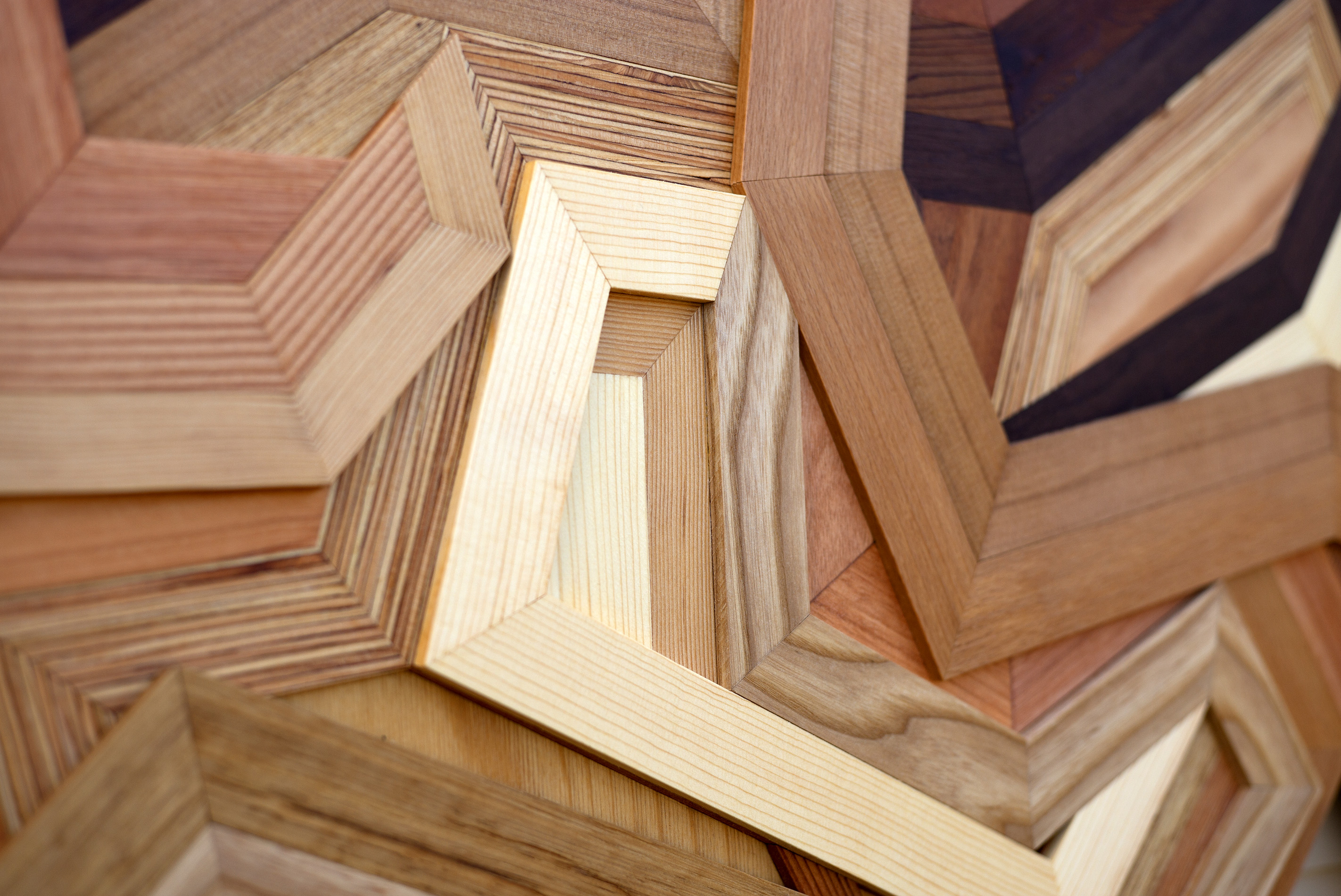



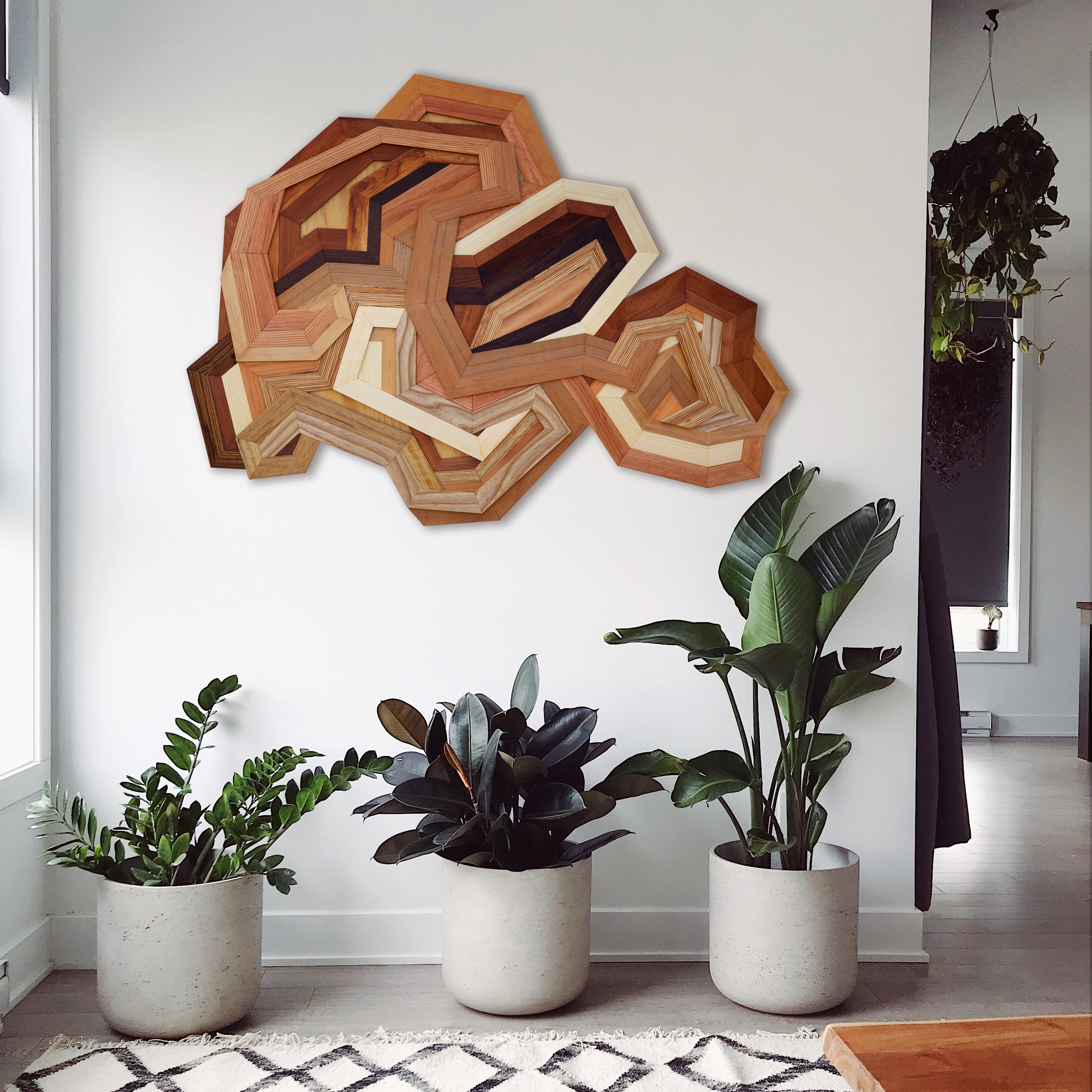
To look up at a bell flower
46.5” x 42”
Salvaged wood (redwood, teak, cedar, mahogany, poplar, ash, oak, maple, maple veneer, fir, pine, beech, some unknown) on plywood






To pick up a leaf
31” x 32”
Salvaged wood (bubinga, walnut, mahogany, redwood, teak, ash, beech, oak, Douglas fir, maple veneer, some unknown) on plywood

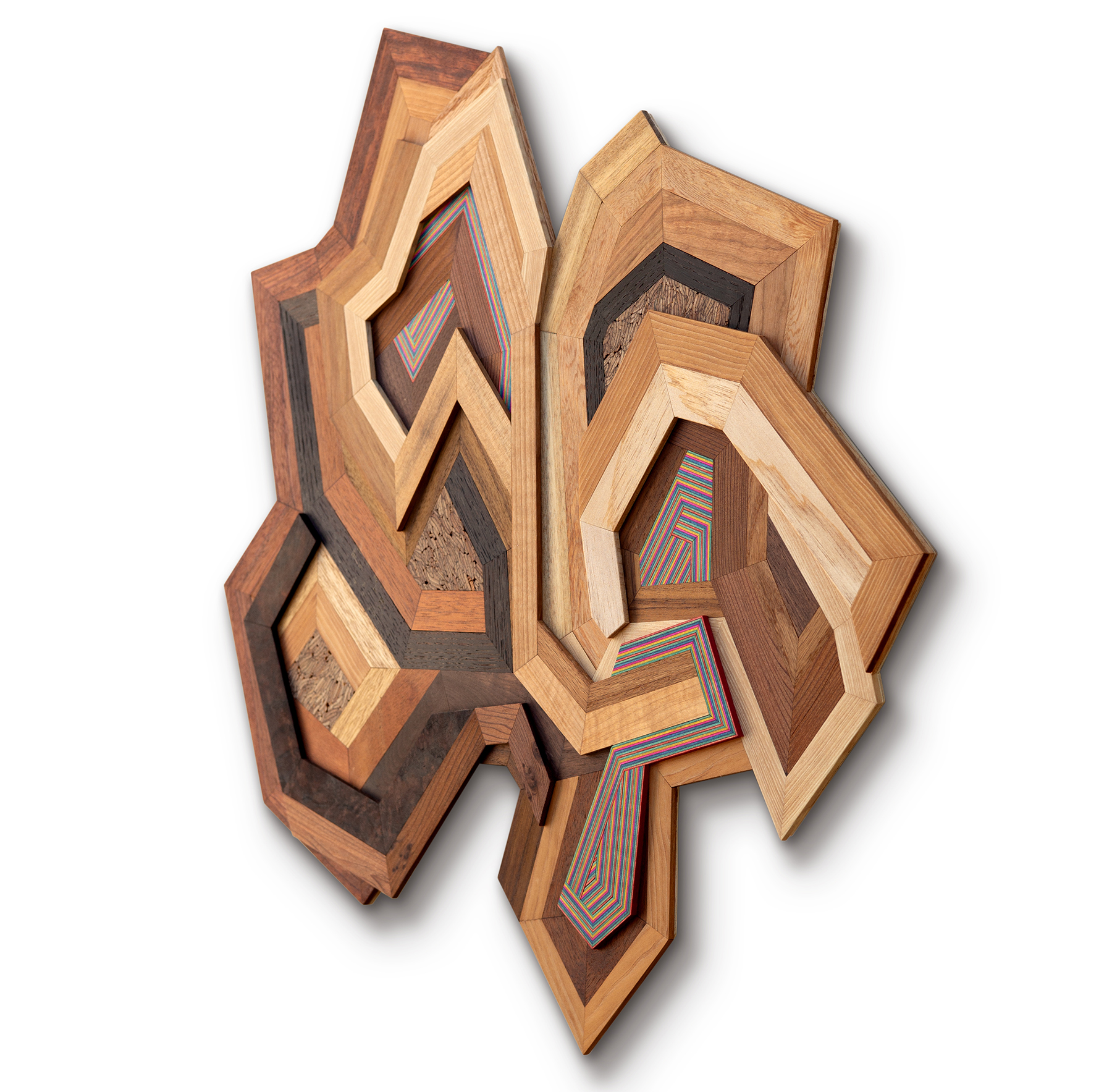




To notice a rainbow
40” x 26”
Salvaged wood (mahogany, maple, redwood, bubinga, pupleheart, walnut, teak, fir, oak, cedar, birch, some unknown) on plywood




To watch a lily pad breathe #1
30” x 31”
Salvaged wood (mahogany, beech, fir, ash, bubinga, some unknown) on plywood




To watch a lily pad breathe #2
23” x 24,5”
Salvaged wood (Baltic birch plywood, beech, spruce, some unknown) on plywood
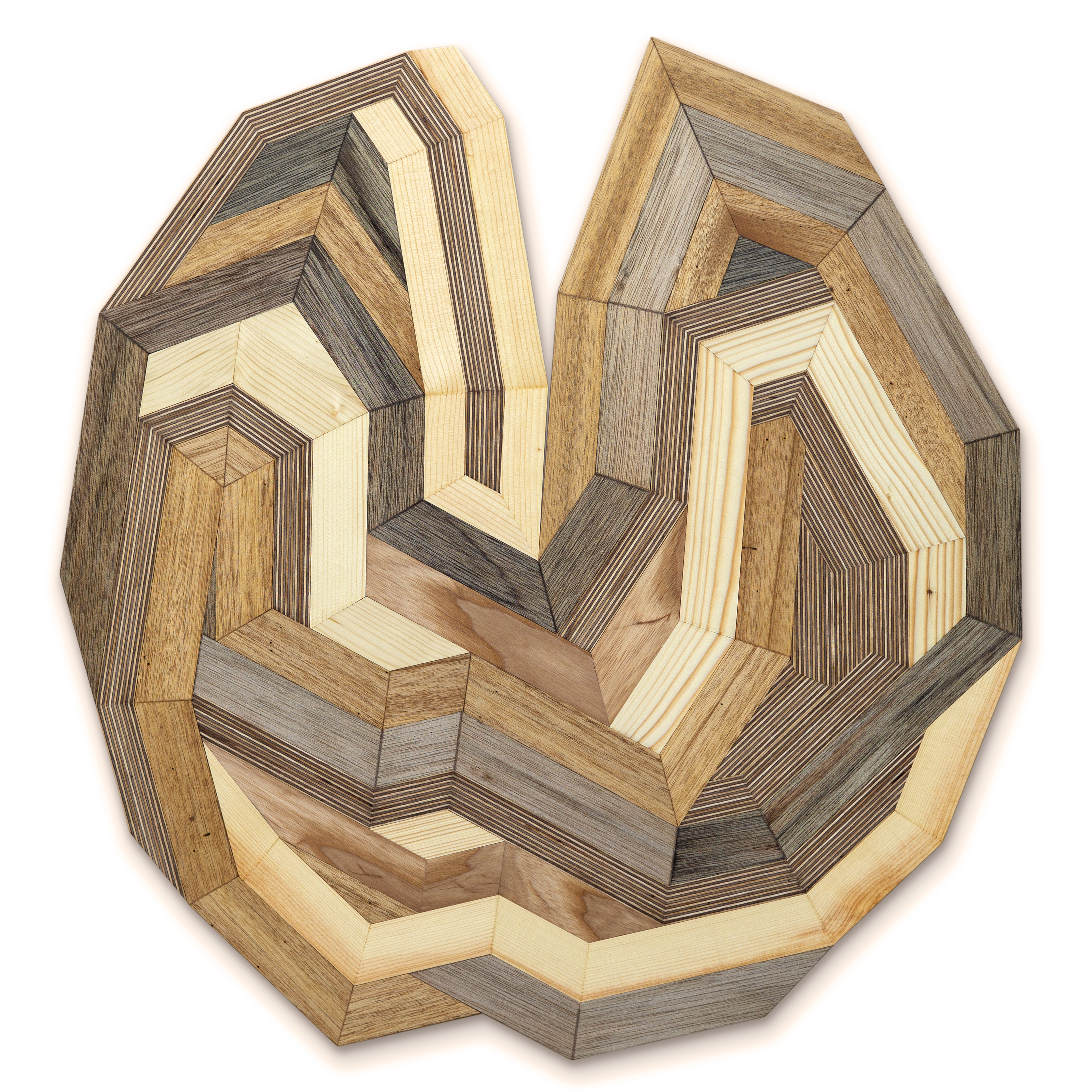
To watch a lily pad breathe #3
18,5”x19,5“
Salvaged wood (teak, cedar, walnut, poplar, spruce, mahogany, oak, some unknown) on plywood

